Department of Mathematics and Philosophy
Undergraduate Research
MATH 444 Undergraduate Research Project. (1-2) Dedicated, individual pursuit of a mathematical topic/application from an area of research that is represented within the department culminating in a final paper or presentation to peers and faculty. Writing Instruction in the Disciplines (WID) course. Prerequisites: MATH 341, ENG 280, junior standing, and consent of instructor.
Learn about our faculty mentors and their research interests.
- Algebra
- Algebraic Coding Theory
- Analysis (Real, Complex, and Nonstandard)
- Applied Mathematics
- Combinatorics
- Differential Equations
- Logic
- Mathematics Education
- Number Theory and Arithmetic Geometry
- Philosophy
- Statistics
Algebra

Clifton Ealy, Professor
Areas of Interest: Logic, Algebra, Group Theory, Nonstandard analysis
Office: Morgan Hall 462
Phone:
(309) 298-1054
Email:
CF-Ealy@wiu.edu
I would invite students to take an undergraduate class they enjoyed and attempt to deepen their understanding of that subject by pursuing a project that picks up where the class leaves off. Such a project could explore connections of that subject to other subjects, or applications of that subject, or just explore the same subject from a different standpoint. For example, a student who had enjoyed Math 421 (Group Theory) could explore connections between group theory and graph theory. Or such a student's project might deal with the applications of group theory to cryptography or error correcting codes. A student who had enjoyed Math 435 (Real Analysis) might study how the subject could be developed using infinitesimals rather than epsilon-delta proofs.
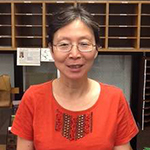
Mei Yang, Associate Professor
Areas of Interest: Algebra and Combinatorics
Office: Morgan Hall 470
Phone:
(309) 298-1383
Email:
M-Yang@wiu.edu
For students who have taken the introductory combinatorics course and learned the basic enumeration techniques and graph theory, there are many directions you may further explore. Here are a few suggestions:
- Compare advantages and disadvantages of different techniques by solving problems using more than one method.
- Investigate the relationships among different techniques. For instance, how to get generating functions from recurrence relations, or vice versa.
- You may further study the generating function method, which nowadays is the main language of enumerative combinatorics. Topics range from compositions of generating functions, generating functions in several variables, and application of generating functions to enumeration of trees, and various kinds of graphs.
Algebraic Coding Theory

J. Thomas Blackford, Professor
Areas of Interest: Algebraic coding theory, algebra, combinatorics
Office: Morgan Hall 463A
Phone:
(309) 298-2358
Email:
JT-Blackford@wiu.edu
Coding theory involves the transmission of encoded information across a noisy communications channel. It has been used in telegraphs, computers, CD-players and cash registers. It provides mathematical algorithms to correct errors in transmission. Often information is transmitted as blocks of binary digits, and an algebraic structure is put on these blocks. This leads to formation of special types of codes including cyclic, negacyclic, and quasi-cyclic codes. Techniques in linear and abstract algebra are used in decoding and error-correcting.
I am looking for a student who is interested in studying algebraic coding theory and in particular cyclic codes and their generalizations. I will provide any abstract algebra that is needed.
Analysis (Real, Complex, and Nonstandard)

Clifton Ealy, Professor
Areas of Interest: Logic, Algebra, Group Theory, Nonstandard analysis
Office: Morgan Hall 462
Phone:
(309) 298-1054
Email:
CF-Ealy@wiu.edu
I would invite students to take an undergraduate class they enjoyed and attempt to deepen their understanding of that subject by pursuing a project that picks up where the class leaves off. Such a project could explore connections of that subject to other subjects, or applications of that subject, or just explore the same subject from a different standpoint. For example, a student who had enjoyed Math 421 (Group Theory) could explore connections between group theory and graph theory. Or such a student's project might deal with the applications of group theory to cryptography or error correcting codes. A student who had enjoyed Math 435 (Real Analysis) might study how the subject could be developed using infinitesimals rather than epsilon-delta proofs.
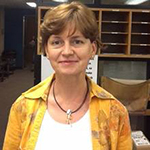
Lia Petracovici, Associate Professor
Areas of Interest: Real Analysis, Complex Analysis, Dynamical Systems, and Differential Equations
Office: Morgan Hall 482
Phone:
(309) 298-1346
Email:
L-Petracovici@wiu.edu
Some possible topics for undergraduate research would be chaotic dynamical systems (what are some different definitions of a chaotic dynamical system? how can we prove that these definitions are equivalent?), fractals (how do they arise? how can we produce fractals on the computer?), and visualizing conformal mappings of the complex plane. I would be happy to work with interested students to find other projects of interest to them.
Applied Mathematics

Fedor Andreev, Professor
Areas of Interest: Web-based education, Mathematics-Physics interrelation, Differential Equations, Computer programming
Office: Morgan Hall 484
Phone:
(309) 298-2362
Email:
F-Andreev@wiu.edu
I'd like to invite students to choose a topic from my areas of interest and work on it. It could be a participation in development of an online homework system for the department, or if a student has an interest in physics, we could find a mathematical idea or theorem and look at its applications to physics. Students may be expected to work with different textbooks and/or special literature. As a researcher, I could suggest some topics from Differential Equations theory to study. For this area, students with knowledge of Differential Equations and Complex Variable are welcome. Students with interests in computer areas could develop a program for graphical representation of paths in plane or, actually, another program for some other mathematical discipline.
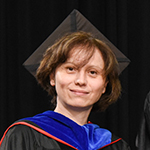
Victoria Baramidze, Professor/Chair
Areas of Interest: Spline theory for spherical approximations and partial differential equations, numerical analysis.
Office: Morgan Hall 474
Phone:
(309) 298-1238
Email:
V-Baramidze@wiu.edu
Beginner students interested in approximation theory will be able to explore approximation methods for curves in a plane: classical methods as well as more recent techniques for approximating natural shapes, such as leaves, or simple drawings such as comics. The process would involve all steps from data collection to programming methods in Matlab and analyzing approximation errors. For more advanced students I would suggest problems involving surface approximations.

Amy Ekanayake, Professor
Areas of Interest: Biomathematics, Difference and Differential Equations, Mathematical Modeling, Stochastic Processes
Office: Morgan Hall 482
Phone:
(309) 298-2347
Email:
AJ-Ekanayake@wiu.edu
I welcome those interested in modeling real-world phenomena. We would consider all stages of the modeling process: determining the most appropriate model type (continuous/discrete, deterministic/stochastic, etc), forming the model by determining appropriate assumptions, analytically studying the model's behavior (equilibria, stability, etc), and using software (such as Matlab, Maple) to find numerical solutions. Finally, students would write a report explaining the model and analysis and its implications for the real-world phenomenon. This type of modeling experience would benefit those considering a career in industry or graduate studies in applied mathematics, and pre-service teachers wishing to be able to promote the practical applications of mathematics in their classrooms.
I am most interested in modeling and computation analysis for biological systems, such as birth-and-death processes, epidemics, genetics, predator-prey and competition relationships, pharmacokinetics, and cellular and other medical topics, among others. No biology prerequisite is required.

Dinesh Ekanayake, Professor/Graduate Advisor
Areas of Interest: control and system theory, optimal control and optimization, differential equations, functional and integral equations
Office: Morgan Hall 463B
Phone:
(309) 298-1239
Email:
DB-Ekanayake@wiu.edu
I would guide students interested in applied mathematics. Research projects would include modeling and control problems arising from interdisciplinary areas. Examples include problems pertinent to smart materials and structures, wind energy, imaging, and some of finance and biology. Students would study one or more aspects of modeling and control approaches, such as investigating possible models, studying existence, uniqueness and stability of feedback, robust or adaptive control. Students would be expected to study relevant literature, participate in analyzing and simulating, and write a report discussing the findings. The goal of such research would be for students to learn to apply their mathematical skills to complex real-life problems.
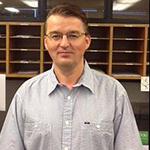
Boris Petracovici, Associate Professor
Areas of Interest:
Office: Morgan Hall 478
Phone:
(309) 298-2315
Email:
B-Petracovici@wiu.edu
I would help the interested students explore topics from the above areas. The research project could come from another field of study, such as economics, physics, engineering, biology, meteorology. However, mathematical ideas and developments must play an essential role. The students would be expected to consult relevant literature and write a report discussing their findings. My main focus in this course is helping students understand new mathematical ideas and communicate them clearly.

Lia Petracovici, Associate Professor
Areas of Interest: Real Analysis, Complex Analysis, Dynamical Systems, and Differential Equations
Office: Morgan Hall 482
Phone:
(309) 298-1346
Email:
L-Petracovici@wiu.edu
Some possible topics for undergraduate research would be chaotic dynamical systems (what are some different definitions of a chaotic dynamical system? how can we prove that these definitions are equivalent?), fractals (how do they arise? how can we produce fractals on the computer?), and visualizing conformal mappings of the complex plane. I would be happy to work with interested students to find other projects of interest to them.
Combinatorics

J. Thomas Blackford, Professor
Areas of Interest: Algebraic coding theory, algebra, combinatorics
Office: Morgan Hall 463A
Phone:
(309) 298-2358
Email:
JT-Blackford@wiu.edu
Coding theory involves the transmission of encoded information across a noisy communications channel. It has been used in telegraphs, computers, CD-players and cash registers. It provides mathematical algorithms to correct errors in transmission. Often information is transmitted as blocks of binary digits, and an algebraic structure is put on these blocks. This leads to formation of special types of codes including cyclic, negacyclic, and quasi-cyclic codes. Techniques in linear and abstract algebra are used in decoding and error-correcting.
I am looking for a student who is interested in studying algebraic coding theory and in particular cyclic codes and their generalizations. I will provide any abstract algebra that is needed.

Mei Yang, Associate Professor
Areas of Interest: Algebra and Combinatorics
Office: Morgan Hall 470
Phone:
(309) 298-1383
Email:
M-Yang@wiu.edu
For students who have taken the introductory combinatorics course and learned the basic enumeration techniques and graph theory, there are many directions you may further explore. Here are a few suggestions:
- Compare advantages and disadvantages of different techniques by solving problems using more than one method.
- Investigate the relationships among different techniques. For instance, how to get generating functions from recurrence relations, or vice versa.
- You may further study the generating function method, which nowadays is the main language of enumerative combinatorics. Topics range from compositions of generating functions, generating functions in several variables, and application of generating functions to enumeration of trees, and various kinds of graphs.
Differential Equations

Fedor Andreev, Professor
Areas of Interest: Web-based education, Mathematics-Physics interrelation, Differential Equations, Computer programming
Office: Morgan Hall 484
Phone:
(309) 298-2362
Email:
F-Andreev@wiu.edu
I'd like to invite students to choose a topic from my areas of interest and work on it. It could be a participation in development of an online homework system for the department, or if a student has an interest in physics, we could find a mathematical idea or theorem and look at its applications to physics. Students may be expected to work with different textbooks and/or special literature. As a researcher, I could suggest some topics from Differential Equations theory to study. For this area, students with knowledge of Differential Equations and Complex Variable are welcome. Students with interests in computer areas could develop a program for graphical representation of paths in plane or, actually, another program for some other mathematical discipline.

Amy Ekanayake, Professor
Areas of Interest: Biomathematics, Difference and Differential Equations, Mathematical Modeling, Stochastic Processes
Office: Morgan Hall 482
Phone:
(309) 298-2347
Email:
AJ-Ekanayake@wiu.edu
I welcome those interested in modeling real-world phenomena. We would consider all stages of the modeling process: determining the most appropriate model type (continuous/discrete, deterministic/stochastic, etc), forming the model by determining appropriate assumptions, analytically studying the model's behavior (equilibria, stability, etc), and using software (such as Matlab, Maple) to find numerical solutions. Finally, students would write a report explaining the model and analysis and its implications for the real-world phenomenon. This type of modeling experience would benefit those considering a career in industry or graduate studies in applied mathematics, and pre-service teachers wishing to be able to promote the practical applications of mathematics in their classrooms.
I am most interested in modeling and computation analysis for biological systems, such as birth-and-death processes, epidemics, genetics, predator-prey and competition relationships, pharmacokinetics, and cellular and other medical topics, among others. No biology prerequisite is required.

Dinesh Ekanayake, Professor/Graduate Advisor
Areas of Interest: control and system theory, optimal control and optimization, differential equations, functional and integral equations
Office: Morgan Hall 463B
Phone:
(309) 298-1239
Email:
DB-Ekanayake@wiu.edu
I would guide students interested in applied mathematics. Research projects would include modeling and control problems arising from interdisciplinary areas. Examples include problems pertinent to smart materials and structures, wind energy, imaging, and some of finance and biology. Students would study one or more aspects of modeling and control approaches, such as investigating possible models, studying existence, uniqueness and stability of feedback, robust or adaptive control. Students would be expected to study relevant literature, participate in analyzing and simulating, and write a report discussing the findings. The goal of such research would be for students to learn to apply their mathematical skills to complex real-life problems.

Boris Petracovici, Associate Professor
Areas of Interest:
Office: Morgan Hall 478
Phone:
(309) 298-2315
Email:
B-Petracovici@wiu.edu
I would help the interested students explore topics from the above areas. The research project could come from another field of study, such as economics, physics, engineering, biology, meteorology. However, mathematical ideas and developments must play an essential role. The students would be expected to consult relevant literature and write a report discussing their findings. My main focus in this course is helping students understand new mathematical ideas and communicate them clearly.

Lia Petracovici, Associate Professor
Areas of Interest: Real Analysis, Complex Analysis, Dynamical Systems, and Differential Equations
Office: Morgan Hall 482
Phone:
(309) 298-1346
Email:
L-Petracovici@wiu.edu
Some possible topics for undergraduate research would be chaotic dynamical systems (what are some different definitions of a chaotic dynamical system? how can we prove that these definitions are equivalent?), fractals (how do they arise? how can we produce fractals on the computer?), and visualizing conformal mappings of the complex plane. I would be happy to work with interested students to find other projects of interest to them.
Logic
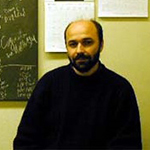
Rumen Dimitrov, Professor
Areas of Interest: Mathematical Logic, Recursion Theory, Recursive Theory, Recursive Model Theory, (Geometric) Lattice Theory
Office: Morgan Hall 437
Phone:
(309) 298-1485
Email:
RD-Dimitrov@wiu.edu
I would like to encourage the interested students to explore different aspects of recursion theory and its application in vector spaces. Mathematical studies sets in general, while recursion theory studies their information content. The Turing degrees of the sets are measures of their information content. The most "orderly" sets are called recursive and have Turing degree 0. I would like to propose the following topics:
Recursion Theory
- Post Program: Explore the simple, hypersimple, and hyperhypersimple sets.
- Oracle construction of non-R.E. degrees and the forcing method in recursion theory.
- The Finite Injury priority Method. Present the original Friedberg-Muchnik Theorem.
- Major sets.
Recursively Enumerable Vector Spaces
- Present the Fundamental Theorem of Projective Geometry.
- Prove the Existence of Maximal Computably Enumerable Vector Spaces.
- Present the Existence of R.E. spaces with no extendable basis.

Clifton Ealy, Professor
Areas of Interest: Logic, Algebra, Group Theory, Nonstandard analysis
Office: Morgan Hall 462
Phone:
(309) 298-1054
Email:
CF-Ealy@wiu.edu
I would invite students to take an undergraduate class they enjoyed and attempt to deepen their understanding of that subject by pursuing a project that picks up where the class leaves off. Such a project could explore connections of that subject to other subjects, or applications of that subject, or just explore the same subject from a different standpoint. For example, a student who had enjoyed Math 421 (Group Theory) could explore connections between group theory and graph theory. Or such a student's project might deal with the applications of group theory to cryptography or error correcting codes. A student who had enjoyed Math 435 (Real Analysis) might study how the subject could be developed using infinitesimals rather than epsilon-delta proofs.
Mathematics Education

Kim Hartweg, Professor
Areas of Interest: Elementary and Middle School Mathematics Education; Constructivist Learning, Problem-Based Learning, Brain-Based Research, the Integration of Computer Technology into the School Curriculum, and the Implications of these on the Teaching of Elementary and Middle School Mathematics.
Office: Morgan Hall 224/466
Phone:
(309) 298-2313
Email:
KK-Hartweg@wiu.edu
I am interested in assisting with undergraduate research projects that can provide insight into how elementary and middle school students learn and understand mathematics. Projects could be designed around the use of invented algorithms for all elementary and middle school math concepts, the use of problems to promote conceptual understanding, uses of computer technology in the mathematics classroom, and the use of conceptual activities to promote a better understanding of mathematical concepts.
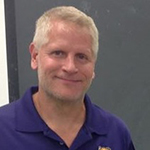
Robert Mann, Associate Professor/MSTM Coordinator
Areas of Interest: Mathematics education; the concept of function; technology in the classroom, guided discovery approaches to learning and teaching mathematics; interdisciplinary math and science courses.
Office: Morgan Hall 211A
Phone:
(309) 298-2037
Email:
RR-Mann@wiu.edu
I am especially interested in how activities (science experiments, interactive games, technology simulations, open-ended problems) can be used in fostering and developing mathematical understanding. In particular, I am researching the role of ADAGE (activity, data, analysis, generalizations, and extensions) based lessons in the mathematics curriculum. I would invite interested undergraduate students to devise, research, and assess activity-based instructional materials and then comment on their effectiveness in the math classroom.
I am also interested in studying how students learn the concept of function and the importance of this concept in all branches of mathematics. This is a broad topic which could include research involving the development of the function concept and definition, the multiple representations or uses of functions, graphing techniques, rates of change, or concept maps.
Number Theory and Arithmetic Geometry
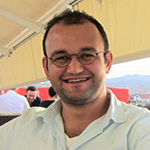
Seyfi Turkelli, Associate Professor
Areas of Interest: Number Theory, Arithmetic Algebraic Geometry
Office: Morgan Hall 441
Phone:
(309) 298-1157
Email:
S-Turkelli@wiu.edu
I welcome all students who enjoy learning mathematics and solving problems. My areas of interest are number theory and arithmetic algebraic geometry.
In short, number theory is the study of integers and the (algebraic or analytic) objects that are made out of them. An example of a well-known problem in number theory is the following: Are there infinitely many pairs of prime numbers that differ by 2? Very recently, it has been proven that there are infinitely many pairs of prime whose difference is less than 70,000,000. One wants to bring this 70-million bound all the way down to 2!
Arithmetic algebraic geometry is the study of polynomial equations and their solutions in integers. For example, we know from high school math classes that we can find all non-zero integers x, y, z such that x^2 + y^2 = z^2-- that's to say this polynomial equation has infinitely many nontrivial solutions in integers--. Can you think of one? In 1637, Pierre de Fermat conjectured one cannot find ANY triple of all non-zero integers x, y, z such that x^n + y^n = z^n for n>2. This problem was solved by Andrew Wiles in 1993-- almost 400 years later!
If these problems sound interesting to you, or if you'd simply like to talk about mathematics, please stop by my office. Maybe we can find a problem for you!
Philosophy

Gordon Pettit, Professor
Areas of Interest: My primary area of interest is in philosophy of religion, including philosophical theology and the problem of evil. I also have interests in metaphysics broadly conceived and in particular, the topic of free will and moral responsibility.
Office: Morgan Hall 446
Phone:
(309) 298-2326
Email:
G-Pettit@wiu.edu
Through our Phil 499 and Phil 312 courses, I am glad to work with students on any topic in philosophy of religion, metaphysics, or ancient philosophy. I am also interested in moral philosophy and applied ethics and would be happy to assist students in those areas as well.
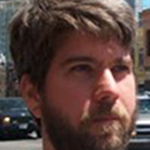
Brian Powell, Professor
Areas of Interest: Ethics, Political Philosophy, Philosophy of Law.
Office: Morgan Hall 447
Phone:
(309) 298-2833
Email:
BK-Powell2@wiu.edu

Christopher Pynes, Professor
Areas of Interest: My philosophical interests are broad, but I am especially interested in issues related to logic, philosophy of science, and moral philosophy.
Office: Morgan Hall 486
Phone:
(309) 298-1467
Email:
CA-Pynes@wiu.edu
Given my wide philosophical interests and my desire to promote good philosophical skills with students, I am generally willing to engage in just about any research topic. Most often for non-philosophy minors who want to do honors projects, we work on logic puzzles, argumentation, and taking the LSAT. For more advanced philosophy students, topics from past projects include: Baye's Theorem, modal logic, legal reasoning and SCOTUS decisions, Rawls vs. Nozick, Scalia on Reading Law, and medical ethics and organ donation.
Statistics
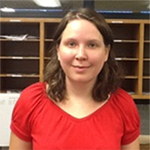
Beth Hansen, Associate Professor
Areas of Interest: Statistics
Office: Morgan Hall 423B
Phone:
(309) 298-2126
Email:
EA-Hansen@wiu.edu
Students who have taken Stat 276 or Stat 471, and are interested in furthering their knowledge in statistics, are welcome to work with me. I am happy to work with anybody, whether the interest is in mathematical statistics or applied statistics. I also like to employ the R statistical software in my work. R can be used for many applications such as regression, simulation, or bootstrapping, and has many graphical options.

Feridun Tasdan, Professor
Areas of Interest: Robust Non-parametric Methods, Estimation Theory, Design of Experiment
Office: Morgan Hall 464
Phone:
(309) 298-2306
Email:
F-Tasdan@wiu.edu
For undergraduate students who are interested in statistical theory, there are several topics that we can work on together, such as scale parameter estimation in two-samples, high efficiency location estimators in one or two-sample problems...For someone interested in statistical applications, the field is wide open for any topics. A design of an experiment problem can be studied, or a survey can be conducted and analyzed for a certain research objective. All of these research ideas will be supported by computer software, and also if interested, students can write their own computer codes to get the results. I invite all interested undergrads to participate in an undergraduate research activity in statistics.

Connect with WIU: